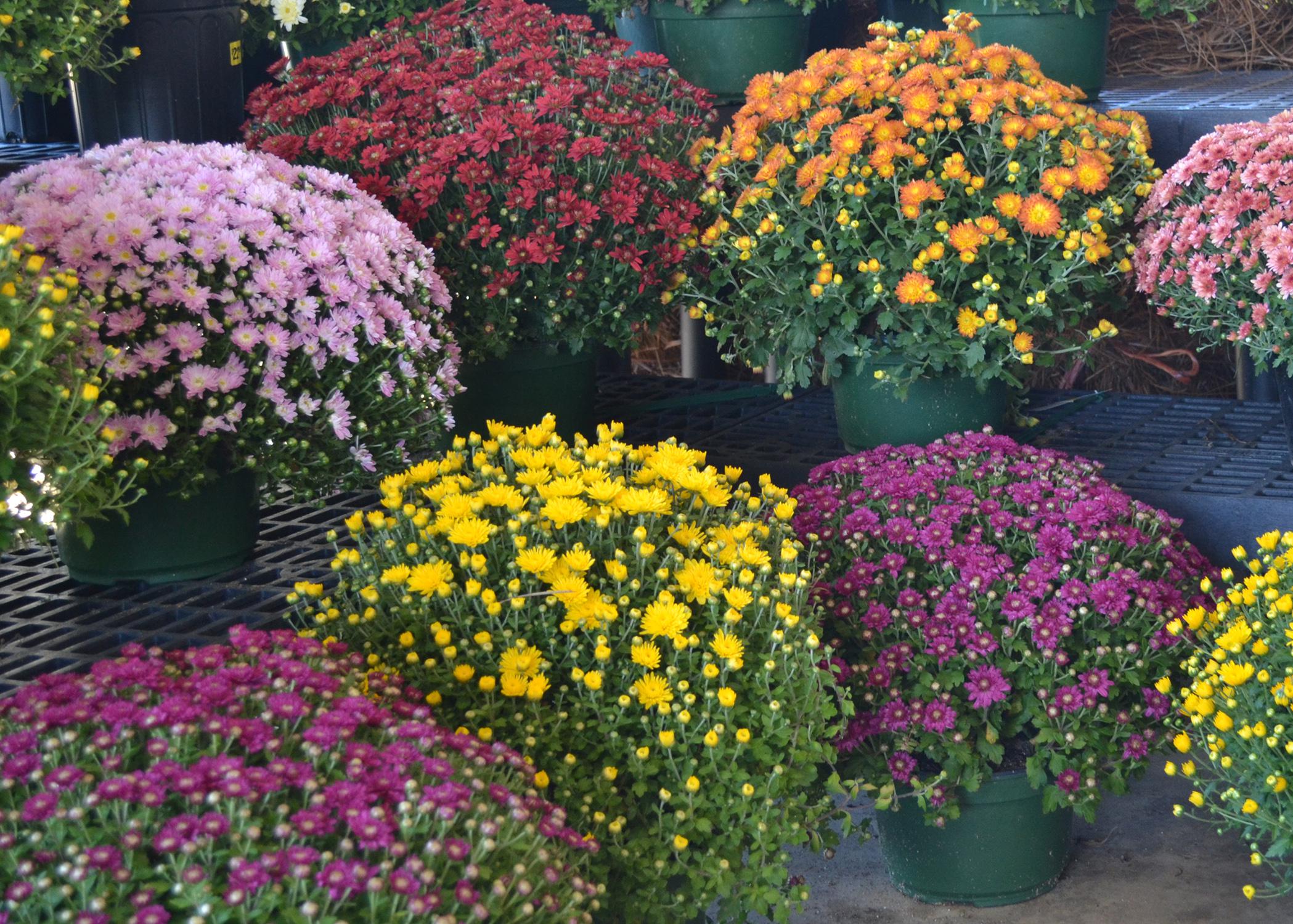Use chrysanthemums for pretty fall displays
With their beautiful colors and massive amounts of blooms, chrysanthemums have always been one of my go-to choices for fall decorations.
While many people use them as temporary, potted decorations, they’re also incredibly rewarding to grow in the landscape. Chrysanthemums, also known as mums, are relatively easy to care for. With the right attention, they can thrive in a variety of settings.
I love pairing mums with other fall decor like pumpkins, gourds and hay bales to create a cohesive look that celebrates the harvest season.
During my recent visit to Buds and Blooms Nursery in Wesson, Mississippi, I noticed staff there have embraced this approach, crafting some stunning fall displays. They also grouped pots of mums in different colors and varying heights, adding depth and creating a more dynamic, eye-catching arrangement.
If you’re looking to add texture and contrast in your landscape, mums pair beautifully with ornamental grasses, asters or even late-season sedum. These creative combinations bring variety to your landscape and enhances the overall aesthetic.
Mums grow best in well-drained soil with plenty of sunlight, ideally receiving at least 6 hours of direct sun each day. I’ve found that planting them in a sunny spot ensures strong growth and helps promote a fuller bloom.
While they are often associated with fall, it’s important to plant mums in the spring if you want them to establish deep roots and survive as perennials. Spring planting gives them time to develop a strong root system before cold weather sets in.
When it comes to watering, make sure to keep the soil consistently moist but not soggy. Mums don’t like to sit in waterlogged soil, as this can lead to root rot. I’ve learned that a good layer of mulch helps retain moisture and keeps the roots cool during the hotter months.
Fertilizing mums regularly is another key to encouraging abundant blooms. Apply a balanced fertilizer like 8-8-8 in the early stages of growth to help them develop strong stems and plenty of buds. However, I taper off feeding in mid-summer to allow the plants to focus on blooming rather than growing foliage.
Pinch back the stems to encourage bushier growth. Around late spring or early summer, I pinch off an inch or two from the tops of the stems. This helps mums produce more side shoots, resulting in a fuller, more compact plant with plenty of blooms in the fall.
I stop this practice by early July so the plants can develop flower buds in time for fall.
For those in cooler climates, growing mums as annuals is common. However, since I’m in warm U.S. Department of Agriculture plant hardiness zone 8, I can treat them as perennials if I plant them early enough. To help them overwinter, I cut the plants back after the first frost and mulch heavily around the base to protect the roots.
By following these tips, I’ve been able to enjoy bright, healthy mums that brighten my fall displays and return year after year with the same spectacular color.




